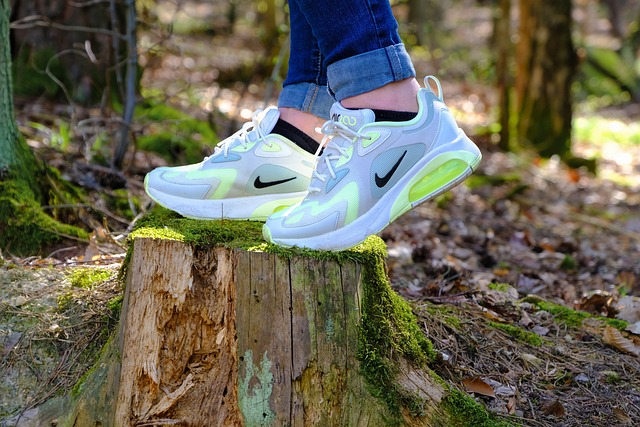Delve into the Dynamic Landscape of Web Design Trends
In the boundless digital realm, web design reigns supreme, shaping the user experience and influencing website success. From sleek interfaces to immersive animations, web designers are constantly pushing the boundaries of innovation, creating mesmerizing digital experiences.
The Genesis of Web Design: From Humble Beginnings to Digital Revolution
The birth of web design can be traced back to the late 1980s, with the emergence of the nascent World Wide Web. As the internet gained traction, static websites paved the way for more interactive and visually appealing experiences. Over the years, advancements in technology and the proliferation of smartphones and tablets fueled the evolution of web design, ushering in an era of responsive and adaptive layouts.
Unveiling Today’s Web Design Trends: A Tapestry of Innovation
In the ever-evolving landscape of web design, trends emerge and shape the digital landscape. Here are some of the most prominent trends currently making waves:
- Minimalism Unbound: Embracing simplicity and elegance, minimalism eliminates clutter and focuses on essential elements. Clean lines, bold typography, and ample white space create a user-friendly and aesthetically pleasing experience.
- Motion & Interaction: Motion graphics, animations, and interactive elements captivate users and engage their senses. These elements create a dynamic and engaging experience that fosters website interaction.
- Artificial Intelligence (AI): AI-powered tools empower web designers to create personalized experiences, optimize content, and streamline the design process. From chatbots to image recognition, AI enhances website functionality and user satisfaction.
- Responsive Design Redefined: With the proliferation of various devices, responsive design is no longer just a trend but a necessity. Websites effortlessly adapt to different screen sizes, ensuring an optimal user experience across all platforms.
- Immersive Experiences: Virtual reality (VR) and augmented reality (AR) are transforming web design, creating immersive experiences that blur the lines between the digital and physical worlds.
Navigating Challenges: Web Design’s Uncharted Territories
Despite the strides made in web design, challenges persist, pushing designers to innovate and find solutions:
- Accessibility Barriers: Ensuring websites are accessible to users with disabilities remains a crucial issue. Web designers must prioritize inclusive design practices to create websites that cater to all abilities.
- Cybersecurity Concerns: The rise of cyber threats underscores the importance of website security. Web designers must implement robust security measures to safeguard user data and protect against cyberattacks.
- Balancing Aesthetics and Functionality: Striking a balance between aesthetics and functionality is a constant challenge. Web designers must create visually appealing websites without compromising usability, performance, and accessibility.
- Staying Ahead of the Curve: Rapid technological advancements and constantly evolving user expectations demand that web designers continuously adapt and stay abreast of the latest trends and best practices.
Success Stories: Web Design Trends in Action
Real-world examples showcase the power of web design trends in action:
- Nike’s Motion Design Mastery: Nike’s website captivates with fluid animations and interactive elements, creating an immersive experience that empowers users to explore products and engage with the brand.
- Airbnb’s AI-driven Personalization: Airbnb leverages AI to personalize user experiences by recommending tailored listings based on preferences and past searches.
- Google’s Accessibility Champions: Google prioritizes accessibility in its web design, ensuring its products are inclusive and accessible to users with disabilities.
Best Practices: A Guiding Light for Web Designers
To navigate the ever-changing waters of web design effectively, follow these best practices:
- User-centric Design: Prioritize the user’s experience above all else. Understand their needs, preferences, and interactions to create websites that are both intuitive and satisfying.
- Responsive Design as a Mandate: Ensure your websites seamlessly adapt to various devices and screen sizes to deliver an optimal user experience across platforms.
- Content is King, Design is Queen: Content remains the backbone of any website. Design your website around compelling content that resonates with your target audience.
- Embrace New Technologies: Stay abreast of emerging technologies such as AI, VR, and AR to enhance user experiences and differentiate your designs.
- Test and Iterate Relentlessly: User testing is crucial to identify areas for improvement and enhance website effectiveness. Regularly test your designs and iterate based on feedback.
Plano’s Pioneering Role in Web Design Trends
Plano has emerged as a hub of innovation and collaboration in the tech industry, with key advancements and contributions to the web design trends landscape. Local startups, design studios, and tech giants have played a pivotal role in shaping the future of web design. From hosting industry events and workshops to fostering a culture of knowledge sharing, Plano is a driving force in the web design trends conversation.
Future Forecast: Embracing the Unknown
The future of web design holds boundless possibilities:
- Immersive Technologies Take Center Stage: VR and AR will continue to transform web design, creating immersive and interactive experiences that transcend the traditional screen.
- Voice Control and Gesture Recognition: Voice and gesture interfaces will empower users to interact with websites in more intuitive and natural ways.
- Ethical Web Design: Sustainability and ethical design practices will take prominence, with web designers striving to create eco-friendly and socially responsible websites.
- Personalized and Contextual Experiences: AI and personalization will reach new heights, delivering highly tailored website experiences that cater to individual user preferences and contexts.
Summary: A Tapestry of Web Design Trends
Web design trends are a constantly evolving force, shaping the digital landscape and redefining user experiences. From minimalism to AI-powered personalization, designers are constantly innovating to create websites that are both visually appealing and highly functional. By embracing best practices, leveraging new technologies, and staying attuned to user needs, web designers can navigate the challenges and harness the power of trends to create websites that captivate, engage, and make a lasting impact.
Contents
